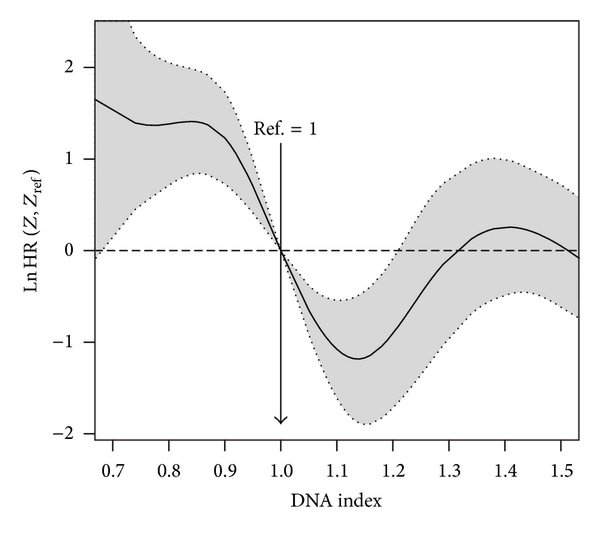I have (censored) survival data that I am fitting with a proportional hazards model with a continuous covariate, X (for my purposes, X ranges from 0 to 1). After fitting the model, I get a statistically significant relationship between X and survival. The problem is, how do I actually illustrate this relationship?
An important point here is that I want to illustrate not merely that survival time is associated with x (if it were just that, I could divide the data into two groups - one with x > some cutoff and another <= the cutoff); I want to illustrate that the relationship is a continuous one: that the larger x gets, the worse survival gets (or the opposite), across the whole range of x. So just arbitrarily dividing the data up into several groups isn't ideal.
Here's some example data (and the Cox model) in R:
set.seed(1234)
x <- runif(1000,0,1)
NumericStatus <- sample(c(0,1),length(x),replace=TRUE)
medianSurvMin <- 5
medianSurvMax <- 50
median.surv <- medMin + x*(medMax-medMin)
rates <- 1/median.surv
surv.time <- rexp(length(x), rate=rates)
library(survival)
cph <- coxph(Surv(surv.time,NumericStatus)~x)
summary(cph)$coefficients
Here, I get a coefficient on x of about .17 and a p-value of basically 0. Now, without censoring (if we set all values in 'NumericStatus' to 1), just plotting survival times against x well illustrates the association is continuous (or, alternatively, discrete). But with censoring I can't really do this. A major issue here is that, with the Cox proportional hazards model, we assume that we don't know what the baseline hazard is, but it still contributes to the data, which makes inherently problematic to try to illustrate the data along with the imputed proportional hazards model. It's hard to plot data along with the model you're fitting it to when you start from the assumption that you can't know the full model.
Is there any plot or table I could make to illustrate the continuous relationship between x and survival time? References to academic literature are welcome; I did a cursory search and didn't find what I was looking for.



